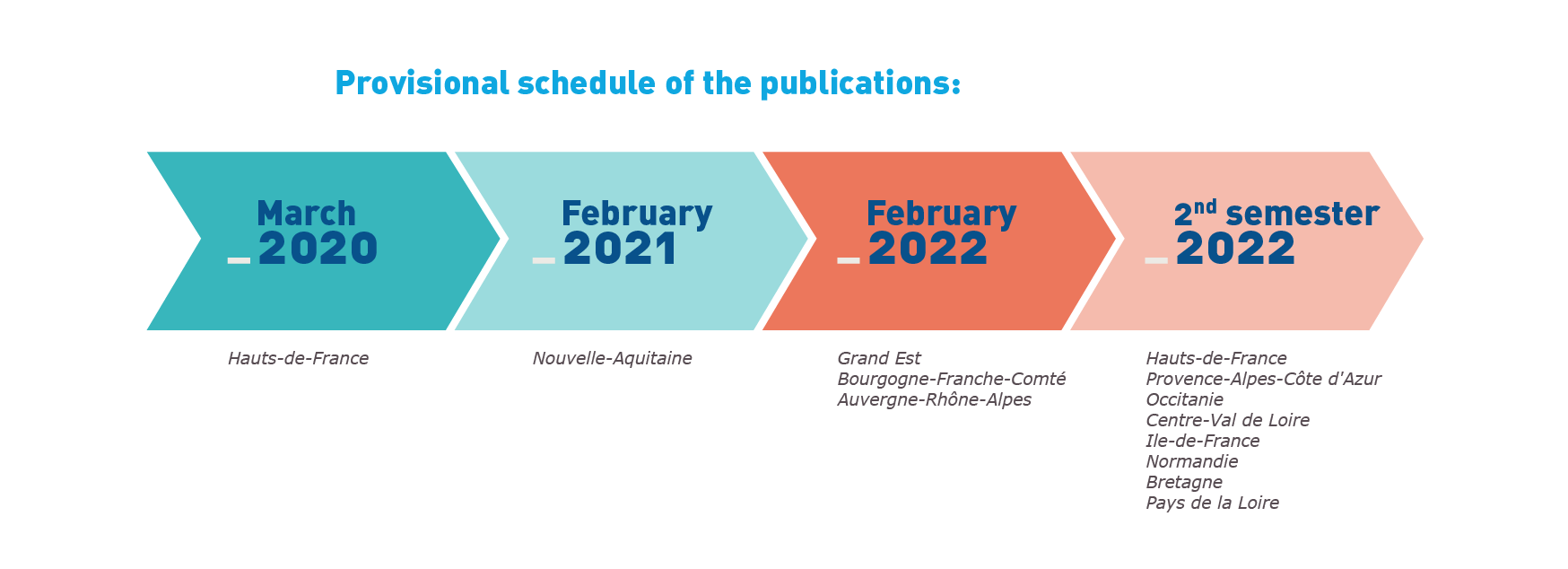Do you have an account?
Why create an account?
After creating an account you will :
- have access to the “favourites” feature,
- be able to download certain data published by RTE,
- have access to forms (PKI certificate, EIC code, Customer questionnaire - KYC),
- have access to notifications.
If you are an RTE customer, feel free to contact your administrator so that he or she can give you access to your company’s services.
RTE has improved the maps feature for the forecast of residual constraints on the electricity transmission system, already available for the Hauts-de-France and New-Aquitaine regions, by incorporating the results of the studies on the three regions Auvergne-Rhone-Alpes, Burgundy-Franche-Comté and Grand Est, now available on the site.
Three new regions are now available in February and all regions in France will be available by the end of 2022
Within the context of the energy transition, RTE is continuing its approach of publishing public transmission system constraints, which provides a 3-5 year forecast of residual constraints identified on the grid for the various regions of metropolitan France, excluding Corsica.
Following the residual constraints maps of the Hauts-de-France regions made available online in 2020 and Nouvelle Aquitaine regions in 2020, RTE has now published new data for the three regions Auvergne-Rhone-Alpes, Burgundy-Franche-Comté and Grand Est on 21 February 2022 on its forecast constraints publication site.
This undertaking will continue with the publication of the forecast constraint maps of the other regions in the course of the second half of the year. The results will be available for all of France by the end of 2022.

More comprehensive data to better understand constraints
As part of this approach, RTE publishes the data allowing market participants to assess the potential benefit of their contribution to the management of grid constraints through their flexibility services (modulation of generation, consumption, storage or other). Specifically, for each forecast constraint, RTE presents the three sites on which flexibilities would have the greatest impact on the constraint. However, until now, these “influencer” sites were limited to RTE-operated substations.
This more in-depth analysis of constraints and their sensitivity to consumption and generation across all of the sites in their area is allowing RTE to extend the scope of influencer sites to all categories of sites (regardless of the operator).
As a result, new and future publications will include all of the types of electrical substations. For regions for which constraint maps have already been published prior to 2022, this new feature will be incorporated in the next data update.
The feature will allow market participants to better assess the potential benefit of their contribution to the management of grid constraints, by installing their flexibilities at the location of the substations with the greatest influence on the constraints, whether these substations are operated by RTE or by users connected to the public transmission system.
Learn more on about the approach
February 22, 2022
